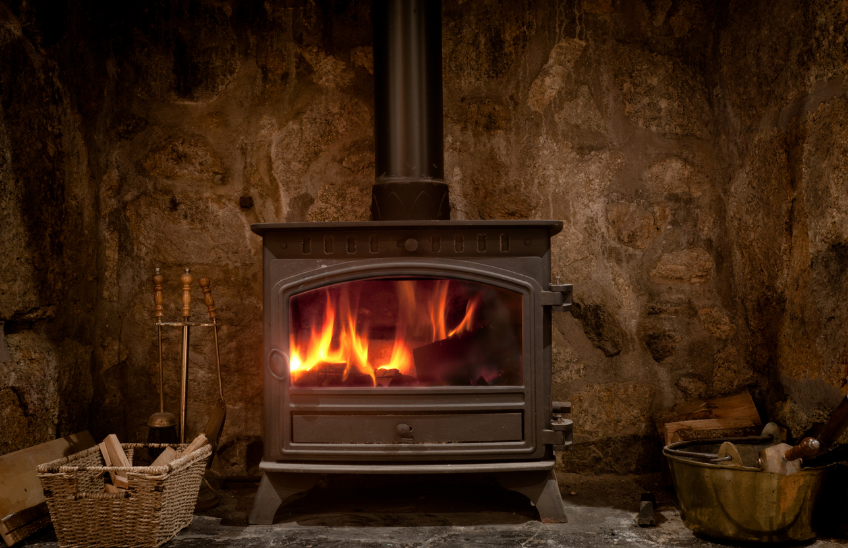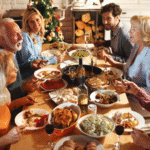
Warmth Without Worry: Safe Use of Wood-Burning and Pellet Stoves
When temperatures drop, nothing beats the comfort of a steady, radiant heat coming from a stove. In New England, wood-burning and pellet stoves have long been part of the seasonal rhythm: the crackle of kindling, the glow of embers, the satisfaction of warm toes after shoveling. That said, the same systems that keep us cozy need thoughtful care to stay safe and efficient. Understanding your stove type, choosing the right fuel, and following daily best practices can make all the difference.
Wood vs. pellet: how they work and what that means for you
A traditional wood-burning stove burns split logs and radiates heat from cast iron or steel. Many modern units are EPA-certified, designed to burn wood more completely and reduce smoke. Some models are catalytic, using a combustor to ignite smoke at lower temperatures; others are non-catalytic but rely on clever airflow to reburn gases. Each design has distinct maintenance needs, but all require dry, seasoned wood and a clean flue.
Pellet stoves use compressed wood pellets, which are automatically fed from a hopper into a burn pot. They typically rely on electricity to run an auger and fans, offering more consistent heat control and often lower emissions. Because pellets are uniform and low-moisture, they burn efficiently—though the stove’s electrical components add a different type of maintenance, and you’ll want a plan for power outages if pellet heat is your primary source.
Inserts and fireplace retrofits
If you have an existing masonry fireplace, a wood or pellet insert can deliver significant energy savings. Inserts sit inside the fireplace opening with a liner up the chimney, converting what was once mostly decorative heat into a dependable source of warmth. The key is proper lining, sealing, and clearance to combustible materials. Professional installation pays off here—especially in older New England homes with unique chimney quirks.
Fuel matters more than you think.
Seasoned hardwoods like oak, maple, and birch are the backbone of clean burns. “Seasoned” means split and dried, typically for 6–12 months, to reach a low moisture content. Wet wood hisses, smokes, and creates creosote—a flammable residue that builds up in the flue. Store wood off the ground, covered on top but open at the sides for airflow. For pellet stoves, use high-quality pellets stored in a dry place; moisture ruins them and can lead to clogs. Never burn painted or treated wood, trash, plastics, or cardboard. They can release harmful fumes and accelerate soot buildup.
Daily habits that keep you safe
Before the season starts, have your chimney and stovepipe inspected and cleaned. Once you’re burning regularly, get into a daily rhythm:
- Check clearances. Keep furniture, curtains, and baskets at least the manufacturer’s recommended distance away.
- Use a proper hearth pad. Sparks and embers can travel farther than you expect when you open the door.
- Open the air control before opening the door to reduce smoke in the room.
- Build small, hot fires rather than smoldering long, cool ones. Hot, efficient burns mean less creosote.
- Empty the ashes into a metal container with a tight lid, then store it outside on a non-combustible surface. Ashes can stay hot for days.
Ventilation and air quality
Good combustion needs oxygen, and tight, well-sealed homes sometimes starve stoves of air. If your fires are hard to start or your home smells smoky, talk with a professional about installing an outside-air kit or improving the draft. Install both smoke and carbon monoxide alarms and test them monthly. Replace batteries at the start of the season. If anyone in your home has respiratory sensitivities, consider a HEPA air purifier to capture fine particulates after you reload the stove.
Kids, pets, and traffic flow
Stoves radiate intense heat, and the metal can be dangerously hot to the touch. Install a sturdy safety gate or screen if there are little ones or pets present—plan room layouts to avoid high-traffic paths too close to the stove door. Share a quick safety briefing with guests, especially during the holidays, so no one leans a bag, scarf, or coat against the stove while chatting.
Pellet stove specifics
Because pellet stoves rely on electricity, think through backup heat for outages—a small generator, battery backup for ignition, or a secondary heat source. Clean the burn pot and ash traps as recommended by the manufacturer, and schedule annual service to keep fans and sensors in good shape. Keep a few extra bags of pellets in a dry, elevated spot to ride out storms, and vacuum the hopper area to prevent sawdust buildup.
Chimney care through the season
Creosote accumulates fastest with low-temperature, smoky burns and wet fuel. Watch for signs: reduced draft, darker glass, and an ashy or tar-like coating in the pipe. If you notice a strong, sharp odor or hear a roaring sound in the flue, that’s an emergency—leave the home and call for help. Routine cleanings are much cheaper and safer than emergency calls, so mark your calendar mid-season if you burn daily.
New England quirks to consider
Older homes may have multiple flues that share a chimney. Make sure each appliance has its own properly lined flue; shared paths can cause backdrafts. Salt air in coastal areas and freeze-thaw cycles can wear on masonry—chimney caps and flashing in good condition help keep water out and animals from nesting. Ground heave and settling can shift pipes; a periodic visual check for gaps or discoloration around the thimble and ceiling is smart.
Conclusion: Cozy, careful, and confident
A well-loved stove is both a source of comfort and a responsibility. By choosing the right fuel, keeping your chimney clean, watching clearances, and planning for kids, pets, and power outages, you can enjoy steady, safe heat all season long. Treat your stove like a trusted friend: give it good wood, a clear path to breathe, and a little attention each day. The reward is a warm home, a peaceful mind, and a New England winter that feels welcoming instead of worrisome.

 Previous Post
Previous Post Next Post
Next Post